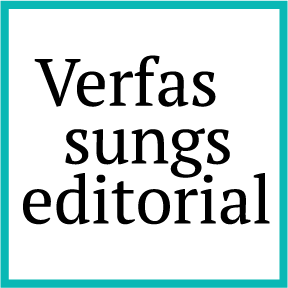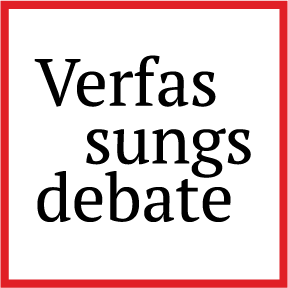Von der Leyen Faces the Vote
A Tale of Parliamentary Control
On July 10, 2025, the European Parliament votes on a motion of censure against Commission President Ursula von der Leyen and her entire College of Commissioners. This procedure, enshrined in Article 234 of the Treaty on the Functioning of the European Union (TFEU), by entailing the dismissal of the Commission as a collective body, represents – since 1958 – the Parliament’s ultimate weapon of democratic oversight, jointly with its right to put oral or written questions to the Commission, its powers to investigate through committee of inquiry, to implement the budget, to adopt measures implementing basic (legislative) acts and elect the EU Commission.
While it has historically been little used (13 previous formal attempts – either withdrawn or put to the vote), no motion formally succeeded in its 67-year history – as it won’t this time. Yet, based on historical precedents (its first use dates to 1972), it would be a mistake to dismiss it as irrelevant, both from a legal and political perspective.
As such, the pending vote against von der Leyen provides a compelling case study for examining the evolving role of the censure motion as both a legal instrument of accountability and a political tool for inter-institutional dialogue. While the motion’s immediate prospects for success remain minimal, its deployment illuminates fundamental questions about democratic legitimacy, institutional loyalty, and the constitutional evolution of EU governance structures towards a post-Lisbon parliamentary democracy’s logic.
The grounds for the motion
The motion of censure against the von der Leyen Commission, formally submitted on July 3, 2025, and scheduled for vote on July 10, 2025, presents three principal categories of alleged violations with specific legal foundations.
First, the primary allegation centers on the Commission’s failure to provide access to text messages between President von der Leyen and Pfizer CEO Albert Bourla regarding COVID-19 vaccine procurement, in violation of Regulation (EC) No 1049/2001 on public access to documents. This claim is sustained by the General Court’s judgment of May 14, 2025, in Case T-36/23 Stevi – The New York Times / Commission, which found that the Commission failed to provide a plausible explanation for not possessing the requested documents and emphasized that the Commission’s duty of transparency is fundamental. Legally, this allegation invokes Article 10(3) TEU, which guarantees citizens’ democratic participation and requires decisions to be taken openly. The motion argues this constitutes a breach of the principles of transparency, good administration, and institutional accountability stipulated in the Treaties.
Second, it alleges financial mismanagement involving two distinct programs: COVID-19 vaccine procurement where the Commission allocated EUR 35 billion yet left EUR 4 billion worth of doses unused while failing to ensure transparency and accountability, compounded by an ongoing EPPO investigation since 2022 into potential legal and ethical breaches in the procurement negotiations; and the Recovery and Resilience Facility, where the Court of Auditors identified serious implementation shortcomings including insufficient cost verification, weak controls, double funding risks, and investment delays due to reliance on Member State self-reporting.
Third, it contests the choice of Article 122 TFEU as the legal basis for the SAFE defense initiative.
Fourth, it accuses the Commission of unlawful interference in elections in Member States such as Romania and Germany “through misapplication of the Digital Services Act to justify vote restrictions and election annulments”.
While the first three grounds provide some evidentiary support and seem plausible at first glance, the fourth is mostly speculative, possibly conspiratorial.
The motion of censure’s logic and use over time
From its appointment, the European Commission is collectively accountable to Parliament (Article 234 TFEU). When trust breaks down, Parliament retains the authority to impose the ultimate sanction: dissolution, not of itself (nobody enjoys that prerogative), but of the Commission, whose members must be replaced. Assuming that’s the logic underpinning this accountability mechanism – reflecting continuous parliamentary control over the Commission –, this scenario never really occurred; the sole exception being that of the Santer Commission, where the mere threat of a motion led the Commission to resign.
To better contextualize today’s motion, we must first understand how to explain its limited use and success.
The first reason is technical in nature. The motion of censure is an electorally demanding mechanism. It requires a double majority of two-thirds of all members present, and a majority of the total number of members. This threshold exceeds the simple majority needed for the Commission’s initial investiture.
Second, the far-reaching consequences of forcing the entire Commission to resign have traditionally dissuaded mainstream parties from rallying behind such motions in sufficient numbers. More fundamentally, this “chilling effect” is deeply rooted in the long-standing common institutional perspective, under which the Parliament perceives the Commission as its ally in opposition to the Council. The Parliament and the Commission ultimately share a sense of institutional loyalty, to the point of prioritizing European unity over democratic accountability. As Fernand Dehousse suggested in 1963 during a plenary, the fact that the Parliament never filed a motion of censure said more about its internal relations than about the executive’s performance (as reported by Koen van Zoen in his new book). Consensual politics of supranational Europe would largely explain why none of the previous attempts succeeded.
Yet the motion’s limited use has not rendered the mechanism politically or even legally irrelevant. Its mere existence has enabled the Parliament to assert its authority, by a “reserve power”: the mere threat of its deployment may prompt the executive to listen to Parliament’s demands.
It has happened before and may happen again. In 1996, Parliament established a committee of inquiry into the mad cow disease crisis. Although a subsequent censure motion was defeated, the findings of the committee’s report paved the way for the Parliament to craft a new mechanism, that of “conditional censure”, through which lawmakers gave the Commission six months to address specific concerns. By combining the Parliament’s privileged accountability instruments – that is, the committee of inquiry and motion of censure – MEPs proved successful in their use of the motion. This proved successful insofar as it led the Commission to meet Parliament’s requests, including the proposal to expand Community areas of competence to include health policy (as an amendment to Article 129 TEC at the Amsterdam Intergovernamental Conference).
The EU Parliament successfully deployed a similar strategy when threatening to table a motion of censure against the Santer Commission, which led to its collective resignation (albeit its lawfulness was contested yet confirmed before the Court of Justice in British Airways vs Commission). Faced with a likely censure vote over allegations of fraud and mismanagement, the Commission resigned collectively on March 15, 1999, before the formal vote. This episode demonstrated that the censure mechanism’s political impact extends beyond its formal legal consequences, creating “anticipatory accountability effects”.
Crucially, the Santer crisis led to significant institutional innovations, most notably the replacement of UCLAF with the more powerful and independent European Anti-Fraud Office (OLAF) in 1999. This demonstrates how institutional crises can produce lasting constitutional changes even without formal censure votes. Suddenly, the idea of collective responsibility was no longer a shield to defend the Commission but also a sword of public accountability.
The evolving function of the motion of censure
This strategic deployment as a leverage tool rather than a genuine removal attempt is manifestly at stake in the present motion. This motion is currently used by its initiators (parliamentary groups to the right of the EPP) and those who oppose it (parliamentary groups to the left of the EPP) to extract concessions from the current Commission.
As this motion has been formally motivated by a recent court ruling criticizing von der Leyen’s refusal to disclose the text messages she exchanged with Pfizer CEO Albert Bourla during the COVID-19 vaccine negotiations, it is also set to play an additional function: to monitor the compliance of that judgment by the Commission. As discussed here, the enforcement of this judgment does not only remain in the hands of the EU Commission, but appears unlikely to ever take place.
At a more political level, this motion is set to prompt a clarifying moment within the current balance of power within and among the Parliament and the Commission. Since the inception of her second mandate in December 2024, the Commission President, initially supported by a centrist coalition (European People’s Party, Social Democrats, Liberals, and Greens), has increasingly relied on right-wing majorities for key votes.
These shifts have left von der Leyen politically vulnerable. A Commission president caught between two incompatible parliamentary blocs threatens the EU’s ability to pursue a coherent political agenda.
The irony that far-right groups have provided mainstream parties with a platform to challenge von der Leyen’s rightward drift illustrates how the censure mechanism can serve unintended constitutional functions, facilitating democratic dialogue across traditional political boundaries.
Conclusions
The July 10, 2025, censure vote against von der Leyen, while unlikely to succeed, represents a constitutionally significant moment in EU institutional development. It demonstrates how the censure mechanism, despite its formal limitations, continues to serve vital functions in maintaining democratic accountability in an EU governance framework increasingly responding to a parliamentary majority’s logic.
From a legal perspective, the case reveals the strengths and limitations of the EU’s accountability framework. While the high threshold for censure success may seem to insulate the executive from democratic pressure, the mechanism’s political impact extends far beyond formal legal consequences.
The von der Leyen motion ultimately tests whether EU constitutional law has evolved sufficiently to handle fundamental questions about democratic legitimacy and institutional accountability. Whether Parliament seizes this moment to clarify the rules of democratic engagement may determine not just the Commission’s political direction, but the broader trajectory of EU constitutional development.
As the Union faces external pressures requiring clear political direction – from the ongoing EU-US trade negotiations to the Ukrainian war –, the censure mechanism’s role in forcing institutional clarity becomes not merely a matter of internal governance, but a question of constitutional fitness for the challenges ahead.
The July 10 vote thus represents more than a routine accountability exercise and certainly more than ‘a far-right’ stunt – it constitutes a rare constitutional moment that may reshape the balance of power within the European Union’s evolving democratic framework.



